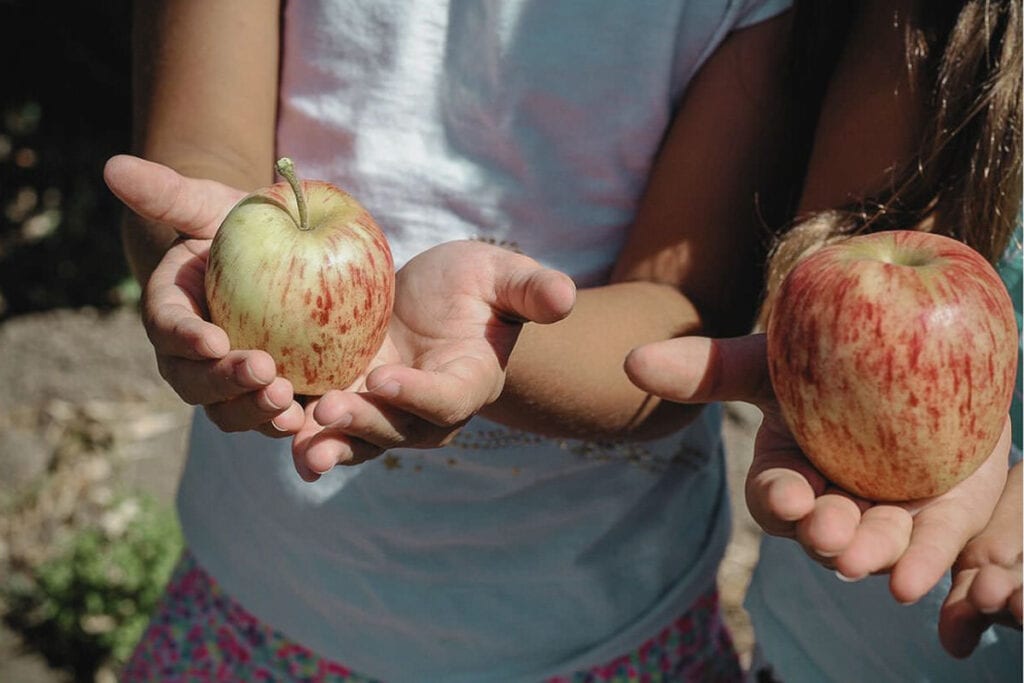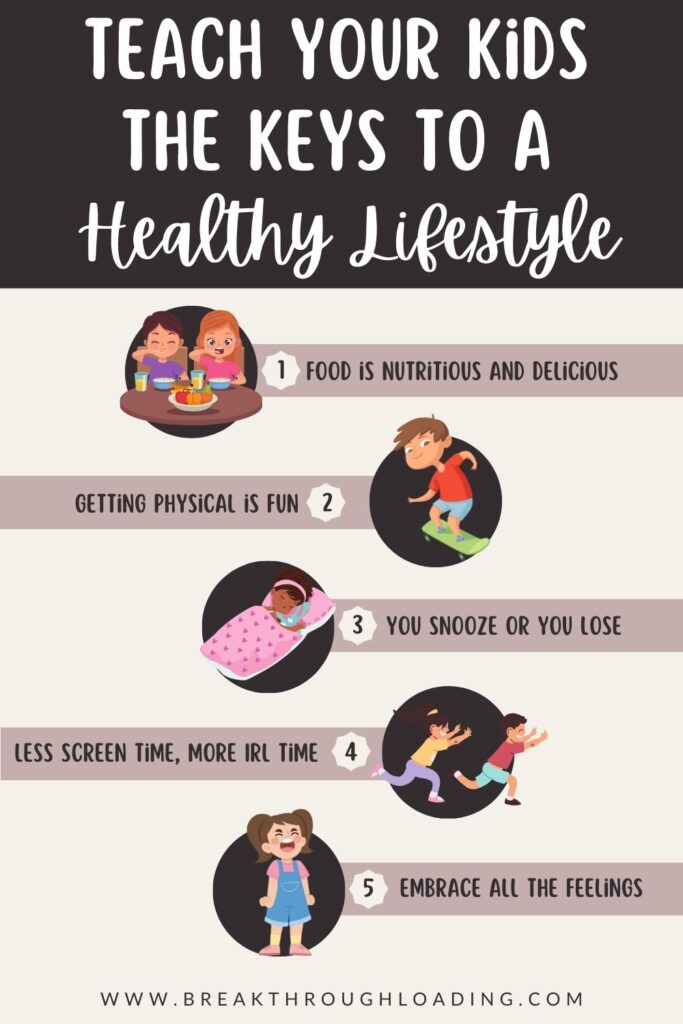25 Ways to teach healthy lifestyle habits to your kids
When it comes to teaching your kids healthy habits, it often feels like you need to be as patient as a saint and elusive as a ninja to make any progress. Nowadays, kids seem to be more interested in what’s trending on TikTok and video games than in playing outside. Why is it so hard to convince those kiddos that some fresh air and broccoli might actually do them some good?!?

*Disclosure: I only recommend products and services that I would use myself, and all opinions expressed here are my own. As an Amazon Associate and affiliate partner of certain other brands, I earn from qualifying purchases. This post contains affiliate links, which means I may earn a small commission (at no additional cost to you) when you sign up or make a purchase through these links. Please see the privacy policy and terms of use to learn more.
The Importance of Teaching Healthy Habits to Kids
Teaching healthy habits to kids is of utmost importance in ensuring their overall well-being and setting them up for a happy, healthy life. By encouraging these habits from an early age, you can help your children develop a strong foundation for making positive choices regarding their physical and mental health.
The increase in processed foods, digital entertainment options, and social media has resulted in a notable rise in health concerns among children and young adults —from obesity and sedentary lifestyles to digital addiction and mental health issues. These problems not only impact their physical, emotional, and mental well-being but also have long-term consequences on their development into adulthood.
The good news? The best people to influence your children’s lifestyle habits are you (aka, the parents).
The not-so-easy aspect? The most effective way to encourage healthy habits in your kids is by serving as a healthy habit role model yourself. 😬 Yep, that means you need to practice what you preach!
25 Ways to teach your kids healthy lifestyle habits
When it comes to healthy habits, it’s all about staying consistent and making it as fun and easy as possible. Let’s jump into these 25 tricks that set a healthy example for your kids and keep them engaged.

Make it nutritious and delicious
Teach your kids that fueling their bodies with the right nutrients and plenty of water will help them feel their best. The key to maintaining good nutrition is to make it second nature —so that they “want to” eat healthy foods rather than “have to.” By making it a family effort, you can show your kids how to make healthy, balanced choices while still enjoying delicious food.
- Make meal planning and preparation a family affair. Take turns picking new, exciting recipes to try each week to encourage your children to try different foods. Breakfast, lunch, snacks, or dinner —eat meals together as a family as much as possible!
- Prioritize water intake by serving it at and between meals. Limit other beverage options to small quantities or as treats.
H2O-to-go tip
Let your child pick one or two water bottles in a design they love to encourage them to drink more throughout the day. My kids love these colorful (and affordable) ombre bottles!
- Serve meals in moderate portions to avoid overeating. Kids learn to identify their fullness cues by eating slowly and without the distractions of TV or electronics. If they are still hungry after 15 minutes, they can always get seconds!
- Have open conversations about how certain foods impact everyone’s body differently. If you’re dealing with a food intolerance in your home, put a positive spin on the situation by explaining how good the right foods will make their body feel.
- Introduce seasonal produce into your diet and experiment with different cooking methods. Encourage your children to try new food choices!
A culinary competition
Host your own Iron Home Chef competition! Designate a unique ingredient, team up, and take turns creating a nutritious culinary masterpiece. Everyone wins by learning valuable cooking skills, creating fun memories, and eating well!
- Keep a healthy attitude towards sweets and snacks by not labeling items as “good” or “bad.” Instead, talk about the nutritional value of each option and allow everyone to enjoy treats without guilt occasionally. (Key word = occasionally!)
Healthy Parent Pointer
By letting your kids see you model healthy eating habits and drinking plenty of water in front of them, you automatically influence how they feel about nutrition. Your kids will learn to prioritize wholesome foods and beverages while establishing healthy boundaries with the yummy treats. And, of course, you’ll also feel great physically by making healthy choices!

Let’s get physical
Enhance your kid’s love of physical activity by encouraging fun, competitive physical games and making exercise a priority for the whole family.
- Schedule family fitness time into your weekly routine. Plan to take a bike ride or a walk together several nights a week.
- Incorporate a family morning yoga or a pre-bedtime stretch session into your day. Mobility is just as important as strength and endurance training!
- Make fitness time fun time! Play a game of tag or flag football in the yard or nearby park.
Families that play together
Create your own fun fitness competition! Have some families over to watch the Super Bowl and have a girls-against-boys flag football game. Or host a 4th of July party with goofy relay races or a mini-triathlon. Have fun dreaming up your special event, and get others to join in on the activities!
- Encourage your kids to try new sports to find their favorite! Get involved by volunteering to coach or coordinate events for the team to show your support for their new hobby.
- Have a dance party! Practice a choreographed routine with a game of Just Dance (you can stream on YouTube for free!). Or crank up the music, turn down the lights, and dance like no one (except your crew) is watching!
- Get a family gym membership with activities for everyone to participate in. Invite your (older) children to try a Zumba or BodyPump class with you.
Healthy Parent Pointer
Make physical activity a priority in your life, and your kids will learn its importance. Talk about the mental and emotional benefits you experience through exercise, and encourage them to evaluate how different types of exercise make them feel.

Snooze or you lose
Sleep plays a crucial role in your child’s overall well-being, both mentally and physically. Sleep is not only when our bodies repair and rejuvenate physically, but it also equips us to handle stress better and regulate our emotions. (Anyone who’s dealt with an overtired kid knows exactly what I’m talking about!)
Teach your children proper sleep hygiene by establishing a routine and following a schedule.
- Know how much sleep each of your children needs for their age range based on science and personal needs. Just like adults, every kid is different —pay attention to how much sleep they need to be in tip-top shape and ensure they get those precious restorative hours!
- Create an age-appropriate bedtime routine to help them wind down and get ready for sleep. Take a bath, read a book, or have quiet time, and definitely reduce the dreaded blue light interference from TV and electronics.
Teen tidbit
Bedtime routines aren’t just for the little kids! Ensure your teen establishes healthy sleep habits by managing screen time and making a reasonable bedtime part of their schedule.
- Don’t allow your children to drink too much caffeine or have any too late in the day. Encourage our healthy beverage policy in tip #2 and stick to water or a nutritious drink such as milk in the afternoon/evening.
- Make your child’s bedroom a haven for sound snoozing. Set the room to a comfortable temperature, ensure they have a comfy mattress and pillows, and add a night light or white noise machine to help them feel safe and sound.
Healthy Parent Pointer
As tempting as it is to let everyone go hog wild and stay up late on the weekends, this is highly disruptive to those sleep patterns you’re working hard to establish during the school week! Enjoy a later evening, but keep bedtimes and wake times reasonable to avoid the dreaded Monday-morning drag. (Yes —even for you, Mom!)

Less screen time, more IRL time
One of the biggest parenting struggles today is actually a relatively new phenomenon —managing screen time. Unfortunately, this issue is equally challenging for adults as it is for kids and teens.
Set healthy tech boundaries for yourself and the whole family using these tricks. (I know you can do it!)
- Create a Phone Zone using a basket or drawer to put your phones/devices during meals, family time, and bedtime. Out of sight, out of mind.
- Establish daily screen time limits for everyone and adjust the device settings accordingly. Once you reach your daily limit, your device is locked until tomorrow. (Homework is the only exception!)
- Encourage your kids to engage in after-school activities such as sports, theater, foreign language clubs, or volunteering. Or just invite their friends over to hang out! More face-to-face social time, less digital time.
- Designate a once-a-month (or once-a-week, if you’re feeling bold!) Family Digital Detox Day. Spend the day at an amusement park, a museum, or camping in nature —somewhere devices are entirely unnecessary— and leave your phones at home.
Healthy Parent Pointer
I can’t say this enough … if you want your children to spend less time on their electronics, then you need to limit your screen time as well. Don’t be a hypocrite —your notifications can wait.

All the feel-good vibes
Shaping your children’s mental and emotional well-being is probably the most challenging yet crucial aspect of parenting. You can’t see inside their pretty little heads like you can see them drinking water or going for a jog. Instead, you must read between the lines, learning and paying attention to their signals and monitoring their behavior for changes.
Stay tuned into your child’s mental health and set them up for success through open communication, unwavering support, and plenty of encouragement.
- Let your children fail sometimes —this is the best way they will learn. Let them bomb that test they didn’t want to study for. Let them try out for the advanced soccer team they are unprepared to join. Let them have a petty fight with that “friend” who has been a bad influence. Let them face these disappointments in life —then be there to support them and help them learn from the experience.
- Keep open and honest communication with your kids at every age by prioritizing one-on-one quality time. Ask about school, activities, friends, joys, and frustrations to stay up to speed on what’s going on in their lives. Share your experiences (the good, the bad, and the ugly) to relate to what they are going through and help them feel understood. Use a prompted mother/child journal (We love this one for girls or boys) to get the conversation going and encourage your child to start journaling.
Teen Tidbit
While it may seem like your teen wants to do anything BUT talk to you, keep at it. By consistently showing interest in their life, you are sending the clear message that you care and are always there to support them.
- Normalize making mistakes and imperfections by acknowledging your own. Use your “oops” moments to explain that stumbles are part of being human, then share how you learn and adapt through them.
- Make sure everyone in the house makes time for self-care so they understand the vital role it plays in your mental health. Have your child try different activities like reading or a creative outlet to discover what calms them down, relieves their stress, and helps them relax.
- Destigmatize mental health and treatment options by talking about it openly. Explain that feeling bad inside can be treated with a doctor as needed, just like you would with the flu or a broken arm. Create a safe environment for your kids to ask you for help if they need it.
Healthy Parent Pointer
Model the behavior, empathy, and emotional intelligence you want to instill in your children. There is no better way to teach them than by example.

For a happy, healthy future
Establishing healthy habits for your kids is not only good for them, it’s also an investment in their future well-being. By providing them with the knowledge and skills necessary to make positive choices regarding their health, you are empowering them to live happy, fulfilling lives.
Remind your children that being healthy does not mean making only healthy choices 100% of the time. Healthy habits are not a one-time choice but a balanced lifestyle to make primarily healthy choices while enjoying occasional indulgences. So let them enjoy the cupcakes and video games and lazy days on the couch …
The healthiest lifestyle is the one that is also enjoyable. Now it’s your turn to show them how it’s done.
What tricks and tips have you found to encourage healthy habits for your kids? What do you do to set an example for a healthier lifestyle? Share your ideas in the comments below!






I absolutely love these ideas. I agree that teaching kids to make good decisions is hard and often a long process!
Healthy habits are hard for all of us! But so worth it once they become part of the routine. Thanks for the note Alison, I’m glad you enjoyed this!
Tara, such great tips!! Will definitely embrace many of them. Even though our children are grown, we are still role models for them and now our 2 grandsons!
Absolutely! “Lead by Example” is one of my favorite life mottos. Glad you enjoyed this Kathleen, thanks for the note!